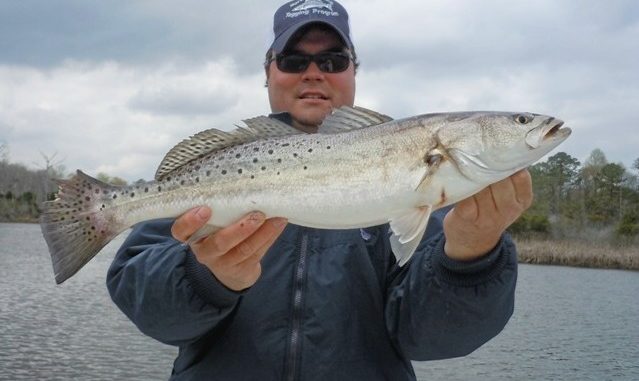
The North Carolina coast is a state with extreme amounts of coastal waters.
The state ranks fifth nationally (3,375 miles) in saltwater coastline (Lousiana, with 7,721 miles, is the leader) and stands second among Atlantic Seaboard states (Maine is No. 1).
But if every brackish sound, river, stream, creek and canal were counted (they’re not), the Tar Heel state probably would lead the lower 48 states in actual miles of real estate touching water. Of course, this is the long way of saying great places to fish exist in N.C. coastal waters that few people exploit.
One of those areas occurs along the northern shore of Pamlico Sound near Swan Quarter.
The region is populated by few residents, most of whom are poor. It’s swampy, hot and bug-infested during summer and fall and gets hit by hurricanes (such as Irene which dumped 80 inches of water). Winters are bitingly cold with wind roaring off the sound and sweeping across the flat land.
“But right now, I’d rather be here than any other place,” said guide Richard Andrews (Tar-Pam Guide Service, 252.945.9715, www.tarpamguide.com).
Andrews has been taking clients to toss Zara Spooks at striped bass in the mornings, then switching to spotted seatrout when the striper bite ends. During the evenings (with all-day trips), he targets stripers again.
“You need a middle to high tide to fish the stump fields for stripers, but if the wind’s coming from the west/northwest, it’ll blow out nearly all the water,” he said. “We’re catching probably 80-percent trout, some stripers, flounder and puppy drum.”
Some days, he said, he might see two other boats.
Specks (14 to 18 inches) are beginning to move toward the backs of creeks, while stripers are along the shoreline near deeper water.
Reds and specks are hitting live baits, menhaden and finger mullet on Carolina rigs, if Andrews can net them. If he’s targeting just big trout, he uses live croakers or pinfish.
“I’m also throwing MirrOlures, MR 17s, shallow-running lures, to the specks in the backs of the creeks,” Andrews said. “But you have to match the color of the water — if it’s murky I use pink or yellow bellies, lures with lots of contrast; if it’s clear I use more natural (baitfish) colors, less contrast.”
Ninety-five percent of his red drum fishing is with artificial lures.
“Gulp baits, Saltwater Assassins and a DOA paddletail are good on a lead-head jig, but the pinfish eat ’em up,” he said. “If they won’t bite the bigger baits, I’ll throw a 2-inch Little Fishie on a 1/16th-ounce jig, but I don’t like to because they’re hard to throw (for distance).”


Be the first to comment